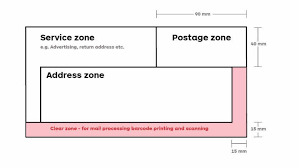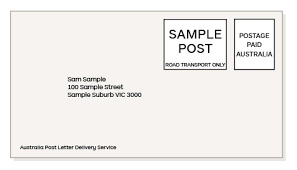#verifyreturnaddress
Explore tagged Tumblr posts
Text
How Does Address Verification API Work?
In an increasingly digital world, maintaining accurate address information is crucial for businesses. Address Verification APIs are powerful tools that help ensure address data is correct and up-to-date. These APIs validate, standardize, and, in some cases, enrich address information in real-time, reducing errors and improving data quality. This article explores how Address Verification APIs work and the benefits they offer.

What is an Address Verification API?
An Address Verification API is a web service that validates and corrects address data. It checks addresses against official postal databases to ensure they are accurate and formatted correctly. These APIs can be integrated into various systems, including e-commerce platforms, CRM systems, and mobile apps, to verify addresses at the point of entry.
How Address Verification APIs Work
Address Verification APIs operate through a series of steps that involve data input, validation, standardization, and response. Here’s a detailed look at each step:
1. Data Input
The process begins when an address is entered into a system, such as during a checkout process on an e-commerce site or when a new customer fills out a registration form. The entered address is then sent to the Address Verification API for validation.
2. Data Transmission
The address data is transmitted to the API endpoint through an HTTP request. This request includes the address details such as street, city, state, postal code, and country. Depending on the API provider, additional information like apartment numbers or secondary address lines can also be included.
3. Validation
Upon receiving the request, the Address Verification API cross-references the provided address against a comprehensive database of postal addresses. These databases are often maintained by postal authorities or specialized data providers. The API checks the address for accuracy, ensuring that each component (street name, number, city, postal code, etc.) is valid and correctly spelled.
4. Standardization
Once the address is validated, the API standardizes it according to the postal service’s formatting rules. Standardization involves adjusting the address to a consistent format, which might include abbreviating street types (e.g., “Street” to “St.”), ensuring consistent casing (e.g., all uppercase), and adding necessary postal codes or country codes. This step is crucial for ensuring that addresses are uniformly formatted, which helps in efficient mail sorting and delivery.
5. Response
After validation and standardization, the API returns a response to the requesting system. This response includes the verified and standardized address. In cases where the address is incomplete or incorrect, the API may also provide suggestions or corrections to help the user amend the address.
6. Error Handling
If the API encounters an address that cannot be validated, it returns an error message explaining the issue. This feedback can prompt users to re-enter their address or provide additional details. Error handling is a critical aspect of the API, as it helps maintain data integrity and guides users towards providing accurate information.
Benefits of Address Verification APIs
Address Verification APIs offer numerous benefits to businesses across various industries:
1. Improved Data Quality
By validating and standardizing addresses at the point of entry, these APIs ensure that customer databases contain accurate and up-to-date information. This reduces the likelihood of errors and ensures efficient communication and delivery processes.
2. Cost Savings
Reducing mail returns and delivery failures translates into significant cost savings. Accurate addresses mean fewer undeliverable shipments, lower postal costs, and reduced labor for manual corrections.
3. Enhanced Customer Experience
Customers benefit from faster and more reliable deliveries when their addresses are validated and corrected in real-time. This leads to higher customer satisfaction and loyalty.
4. Operational Efficiency
Integrating Address Verification APIs into business processes streamlines operations by automating address validation and correction. This reduces the need for manual intervention and speeds up order processing and fulfillment.
5. Compliance and Standardization
For businesses operating internationally, Address Verification APIs ensure compliance with various postal standards and formats. This is particularly important for meeting the requirements of different postal authorities and avoiding delivery issues.
6. Fraud Prevention
Accurate address data can help prevent fraudulent activities, such as fake orders or identity theft. By ensuring that addresses are valid and associated with legitimate entities, businesses can reduce the risk of fraud.
Conclusion
Address Verification APIs are indispensable tools for businesses that rely on accurate address data for their operations. By validating and standardizing addresses in real-time, these APIs improve data quality, reduce costs, enhance customer experience, and boost operational efficiency. As businesses continue to digitalize their processes, the importance of integrating reliable Address Verification APIs will only grow, ensuring accurate and efficient communication and delivery across the board.
youtube
SITES WE SUPPORT
Verify Return Address – Wix
0 notes
Text
Mail Return Solutions That Companies Can Employ
Mail return is a significant challenge for companies, especially those involved in direct mail marketing, subscription services, and e-commerce. Returned mail can lead to increased operational costs, lost sales opportunities, and customer dissatisfaction. However, there are several solutions companies can employ to mitigate mail return issues effectively.

1. Address Verification Services
One of the most effective ways to reduce mail returns is by using address verification services. These services verify and standardize addresses at the point of entry, ensuring that the addresses entered into a company's system are accurate and up-to-date. Address verification can be integrated into online forms, CRM systems, and other customer databases. By catching errors before mail is sent out, companies can significantly reduce the incidence of returned mail.
2. National Change of Address (NCOA) Updates
The United States Postal Service (USPS) offers a National Change of Address (NCOA) service that updates address information when individuals or businesses move. By regularly cross-referencing their customer databases with the NCOA registry, companies can ensure they have the most current addresses. This is especially crucial for businesses with recurring mailings, such as subscription services or billing departments.
3. Return Mail Processing Services
There are third-party providers that specialize in return mail processing. These services handle returned mail on behalf of companies, updating customer records and attempting to correct and resend the mail. This can be particularly beneficial for companies that receive a high volume of returned mail, as it offloads the processing burden and ensures that corrective actions are taken promptly.
4. Enhanced Data Collection Techniques
Improving how data is collected in the first place can also help reduce mail returns. Companies should ensure that they have multiple points of validation during data entry, such as mandatory fields, drop-down menus for address components, and real-time validation against postal databases. Encouraging customers to double-check their entries before submission can also reduce the likelihood of errors.
youtube
SITES WE SUPPORT
Verify Return Address – Wix
0 notes
Text
Reasons to Return to Sender Auspost
“Return to Sender” is a postal service offered by Australia Post (Auspost) that redirects undeliverable mail back to the sender. Various reasons might necessitate the return of mail, ensuring that it either reaches the correct recipient or informs the sender of delivery issues.

Common Reasons for Returning Mail
Incorrect Address: The address provided is incomplete or inaccurate, preventing delivery.
Unknown Recipient: The recipient does not live at the address, or the name is not recognized.
Moved: The recipient has moved without providing a forwarding address.
Refused: The recipient declines to accept the mail.
Unclaimed: The mail remains uncollected at the post office for a specified period.
Insufficient Postage: The postage paid is inadequate for the mail's delivery.
Security Concerns: Items that pose a security risk or violate postal regulations.
How “Return to Sender” Works
When mail cannot be delivered, Auspost marks it with a “Return to Sender” label, noting the reason for non-delivery. The process involves:
Initial Attempt: The postal worker attempts to deliver the mail.
Undeliverable Decision: If the mail cannot be delivered, it is marked with the reason.
Return Process: The mail is returned to the sender’s address, if available.
Steps for Senders
Verify Address: Always double-check the recipient’s address before sending mail.
Include Return Address: Clearly include your return address on the envelope or package.
Use Correct Postage: Ensure the correct amount of postage is affixed to avoid delays.
Notify Recipients: Inform recipients to expect your mail, especially for important documents or packages.
Handling Returned Mail
When you receive returned mail, take the following steps:
Review the Reason: Check the “Return to Sender” label to understand why it was undeliverable.
Correct Errors: If the address was incorrect, update it before resending.
Contact Recipient: If possible, contact the recipient to confirm the correct address.
Resend or Refund: Depending on the situation, resend the mail or process a refund if applicable.
Understanding the “Return to Sender” service helps both senders and recipients address mail delivery issues promptly, ensuring effective communication and reducing postal inefficiencies. By adhering to best practices and staying informed about postal regulations, you can minimize the occurrence of undeliverable mail and enhance the overall mail delivery experience.
youtube
SITES WE SUPPORT
Verify Return Address – Wix
0 notes
Text
Writing a PO Box Address
A PO Box, or Post Office Box, is a secure and private way to receive mail. It is commonly used by individuals and businesses who require a reliable mailing address independent of their physical location. Writing a PO Box address correctly is essential to ensure mail delivery without delay or confusion.

Why Use a PO Box?
Privacy: A PO Box offers a layer of anonymity since it doesn’t reveal your physical address.
Security: PO Boxes are located in secured postal facilities, reducing the risk of theft or damage.
Convenience: Ideal for people who move frequently or businesses without a physical office.
Addressing a PO Box
When addressing mail to a PO Box, it’s crucial to follow the standard format to ensure it is processed correctly by postal services. Here’s the typical format:
Recipient’s Name or Business Name
PO Box Number
City
State/Province
Postal Code
Country (if applicable)
Steps to Addressing a PO Box
Recipient Information: Write the recipient’s name or business name on the first line. Ensure it’s clear and correctly spelled.
PO Box Number: Write “PO Box” followed by the box number. Avoid using the “#” symbol as it can lead to confusion.
City and State/Province: Include the city and state or province where the PO Box is located.
Postal Code: Ensure the correct postal code is included to facilitate prompt delivery.
Country: For international mail, include the country name in uppercase letters on the last line.
Common Mistakes to Avoid
Incorrect Box Number: Double-check the PO Box number for accuracy.
Missing Information: Ensure all parts of the address are included, especially the postal code.
Handwriting: Write legibly to avoid misinterpretation by postal workers.
Using a PO Box is a practical solution for secure and private mail handling. By following the correct addressing format, you ensure your mail is delivered promptly and accurately.
youtube
SITES WE SUPPORT
Verify Return Address – Wix
0 notes
Text
Addressing an Envelope for Defence Personnel
Addressing an envelope for defence personnel is a crucial task that ensures your mail reaches the intended recipient, whether they are on a military base, deployed overseas, or stationed at a different location. Properly addressing the envelope demonstrates respect and consideration for the recipients' service, while also adhering to the protocols set by military and postal services.

Understanding the Importance of Proper Addressing
Defence personnel often move frequently and may be stationed in remote or secure locations. Incorrectly addressed mail can lead to significant delays, or worse, it may never reach the recipient. Following the correct format helps streamline the process, ensuring that mail is delivered efficiently.
Address Format for Domestic Military Bases
When sending mail to defence personnel within your country, the address format is similar to civilian addresses with a few key differences. Here’s an example format:
Recipient’s Rank and Full Name
Unit or Regiment
Base Name
Street Address or PO Box
City/Town
State/Province
Postal Code
Country (if applicable)
Address Format for Overseas Deployment
Mail sent to deployed personnel usually follows a different structure, often utilizing a specific military postal service. Here’s a common format:
Recipient’s Rank and Full Name
Unit or Regiment
Operation or Base Name
APO/FPO/DPO Address (Army Post Office, Fleet Post Office, Diplomatic Post Office)
City (APO/FPO/DPO)
State (AA/AE/AP) (AA for Armed Forces Americas, AE for Armed Forces Europe, AP for Armed Forces Pacific)
Postal Code
Special Considerations
Security Concerns: Avoid including specific location details that could compromise operational security.
Customs Declarations: When sending packages, especially internationally, include a customs declaration form.
Return Address: Always include your return address in case the mail cannot be delivered.
By adhering to these guidelines, you ensure that your mail reaches defence personnel efficiently, maintaining a vital link between them and their loved ones.
youtube
SITES WE SUPPORT
Verify Return Address – Wix
1 note
·
View note